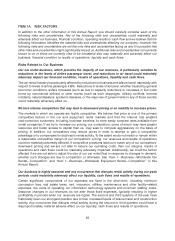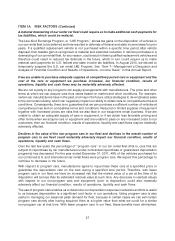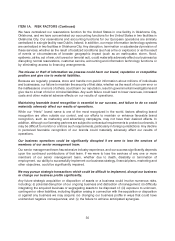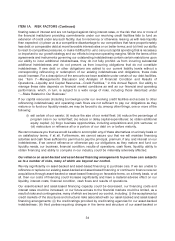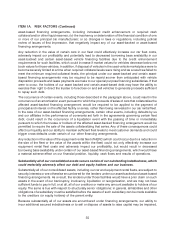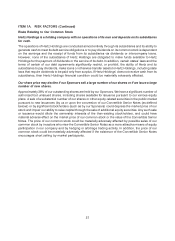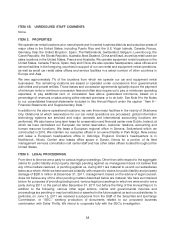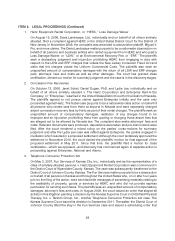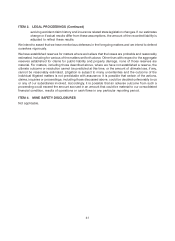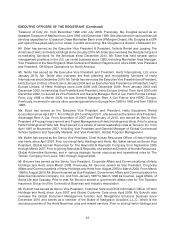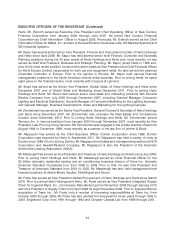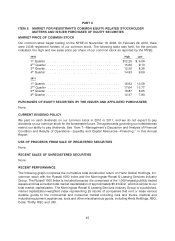Hertz 2011 Annual Report Download - page 62
Download and view the complete annual report
Please find page 62 of the 2011 Hertz annual report below. You can navigate through the pages in the report by either clicking on the pages listed below, or by using the keyword search tool below to find specific information within the annual report.ITEM 1A. RISK FACTORS (Continued)
which could have a material adverse effect on our financial flexibility and force us to attempt to incur
additional unsecured indebtedness, which may not be available to us.
Restrictive covenants in certain of the agreements and instruments governing our indebtedness
may materially adversely affect our financial flexibility or may have other material adverse effects
on our business, financial condition, cash flows and results of operations.
Certain of our credit facilities and other asset-based and asset-backed financing arrangements contain
covenants that, among other things, restrict Hertz and its subsidiaries’ ability to: (i) dispose of assets;
(ii) incur additional indebtedness; (iii) incur guarantee obligations; (iv) prepay other indebtedness or
amend other financing arrangements; (v) pay dividends; (vi) create liens on assets; (vii) sell assets;
(viii) make investments, loans, advances or capital expenditures; (ix) make acquisitions; (x) engage in
mergers or consolidations; (xi) change the business conducted by us; and (xii) engage in certain
transactions with affiliates.
Our Senior ABL Facility (as defined below in Note 4 to the Notes to the consolidated financial statements
included in this Annual Report under the caption ‘‘Item 8—Financial Statements and Supplementary
Data’’) contains a financial covenant that obligates us to maintain a specified fixed charge coverage ratio
if we fail to maintain a specified minimum level of liquidity. Our ability to comply with this covenant will
depend on our ongoing financial and operating performance, which in turn are subject to, among other
things, the risks identified in ‘‘—Risks Related to Our Business.’’
The agreements governing our financing arrangements contain numerous covenants. The breach of
any of these covenants or restrictions could result in a default under the relevant agreement, which
could, in turn, cause cross-defaults under our other financing arrangements. In such event, we may be
unable to borrow under the Senior ABL Facility and certain of our other financing arrangements and may
not be able to repay the amounts due under such arrangements. Therefore, we would need to raise
refinancing indebtedness, which may not be available to us on favorable terms, on a timely basis or at all.
This could have serious consequences to our financial condition and results of operations and could
cause us to become bankrupt or insolvent. Additionally, such defaults could require us to sell assets, if
possible, and otherwise curtail our operations in order to pay our creditors. Such alternative measures
could have a material adverse effect on our business, financial condition, cash flows and results of
operations.
An increase in interest rates or in our borrowing margin would increase the cost of servicing our
debt and could reduce our profitability.
A significant portion of our outstanding debt bears interest at floating rates. As a result, to the extent we
have not hedged against rising interest rates, an increase in the applicable benchmark interest rates
would increase our cost of servicing our debt and could materially adversely affect our liquidity and
results of operations.
In addition, we regularly refinance our indebtedness. If interest rates or our borrowing margins increase
between the time an existing financing arrangement was consummated and the time such financing
arrangement is refinanced, the cost of servicing our debt would increase and our liquidity and results of
operations could be materially adversely affected.
36


